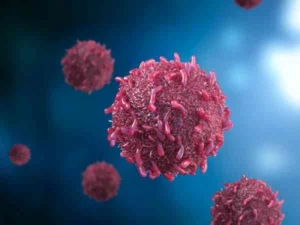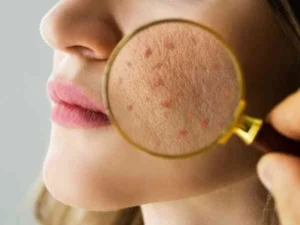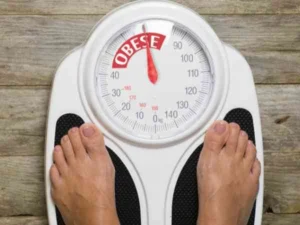Get the Facts on Breast Cancer Today! Why Early Detection is Key to Survival

Breast cancer Awarenessis important as it is the second leading cause of death among women worldwide. In 2017 alone, 1.67 million people were diagnosed with breast cancer, making it the most commonly diagnosed type of cancer in women. Breast cancer is also the most common cancer in women under 50 years old.
What all you will get in this article:
- Reasons for Breast Cancer
- How common is breast cancer among women?
- Early detection
- The treatment options
In the United States alone, about 40,000 people die each year due to breast cancer. Early diagnosis and treatment reduce mortality rates significantly. As a woman ages, her chances of developing breast cancer increase. The risk increases steadily throughout adulthood until menopause.
There are two types of breast cancers:invasiveandnoninvasive.
- Invasive breast cancer cells have spread beyond their original location.
- Noninvasive breast cancer does not invade surrounding tissue.
The best way to treat breast cancer is to detect it early. If detected early enough, treatment options are much greater than if left untreated. Unfortunately, many women do not seek medical attention until they have already developed symptoms. By then, it may be too late to successfully treat the disease.
Breast Cancer Awareness Month is celebrated in October to raise public awareness about breast cancer and its prevention. Breast cancer awareness month was established in 1982 by the National Breast Cancer Coalition (NBCC) to increase public knowledge about breast cancer and its prevention. In addition to raising awareness, NBCC also works to provide education and screening services, promote research funding, and advocate for improved access to treatment and care.
Breast Cancer Awareness: Reasons for Breast Cancer

There are many reasons why breast cancer is so prevalent today. One of these reasons is the fact that we have not been eating enough fruits and vegetables. Fruits and vegetables provide us with antioxidants that help fight off free radicals. Free radicals are unstable molecules that are created naturally as a result of cellular respiration. These unstable molecules damage DNA and increase the risk of developing cancer. Antioxidants neutralize free radicals and prevent them from damaging our cells. Eating foods high in antioxidants helps reduce the risk of getting cancer.
Another reason why breast cancer is so rampant today is because of the chemicals that are being put into our environment. Chemicals like pesticides, herbicides, and fungicides are known carcinogens (cancer-causing agents). Pesticides are especially harmful since they enter the body through the skin and food chain. When we ingest them, they get stored inside our fat cells and then released into the bloodstream. Once they reach the liver, you can easily get them out of the body. However, if they accumulate over time, they may lead to cancer. Herbs and spices can also contribute to the development of cancer.
Studies show that certain herbs like garlic, onions, and ginger can stimulate cancerous tumors. Other herbs like turmeric and black pepper may inhibit tumor growth. Research suggests that consuming these types of herbs regularly could lower the risk of developing cancer later in life. Lastly, lifestyle choices play a role in whether or not someone develops breast cancer. Being overweight increases the risk of developing breast cancer. Obesity causes estrogen levels to spike, which can lead to abnormal cell division.
Excessive alcohol consumption may also lead to breast cancer. Alcohol lowers the number of sex hormones present in the body, which may affect the way the cells divide. Smoking cigarettes also increases the risk of developing cancer, mainly because cigarette smoke contains thousands of different toxins that can harm the lungs and respiratory system. Tobacco smoke damages DNA and increases the risk of cancer.
Breast Cancer Awareness: How common is breast cancer among women?

According to theAmerican Cancer Society(ACS), approximately 252,710 women were diagnosed with breast cancer in 2016. About 40,610 deaths occurred due to breast cancer in the same year. While these numbers seem frightening, it should be noted that only about 10% of those affected died from their condition.
When it comes to early detection, how can I ensure it?
Early detection means catching breast cancer before it spreads. If detected early enough, breast cancer may not spread beyond the breast. There are several ways to detect breast cancer before any symptoms appear. These includeself-exams, mammograms, clinical exams, blood tests, and genetic testing. Self-examination is the simplest method to use. Women should perform monthly breast examinations starting at age 20. One should go for a yearly examination once they are 30. Mammography is the standard screening test for detecting breast cancer. However, mammograms alone cannot always determine whether a lump is benign or malignant. Therefore, you should go for additional imaging studies (such as ultrasound) to confirm the diagnosis.
Clinical exams involve examining breasts directly. Blood tests measure levels of certain biomarkers in the body. Genetic testing involves analyzing DNA samples to identify mutations associated with an increased risk of developing breast cancer. Breast self-exams are an effective way to detect lumps and changes in breasts. Women should perform monthly breast self-exams and report any abnormalities immediately.
Breast Cancer Awareness: The treatment options
A mammogram is the best way to detect breast cancer at its earliest stage. Mammograms provide images of the breasts’ ducts, glands, and lymph nodes. These images allow doctors to identify abnormalities before they become tumors. Women should get screened starting around the ages of 40-45 and continue getting checked annually. If there are any abnormal results, you should go for further tests immediately.
Treatment options depend on the size, stage, and grade of the tumor. Treatment options range from surgery, radiation therapy, chemotherapy, hormone therapy, targeted therapy, immunotherapy, biological therapy, and stem cell transplantation.
Early detection and treatment can reduce mortality rates significantly. Regular self-examinations, annual screenings, and regular checkups with your doctor can help keep you safe from breast cancer.
Many women who have breast cancer have gone on to live long and productive lives. Despite the seriousness of the disease, there are treatments available that allow patients to survive and thrive.
Final Takeaway,
Breast cancer symptoms:A lump in the breast area is one of the first signs of breast cancer. A lump may feel hard, tender, swollen, or change shape. Other breast cancer symptoms include discharge from the nipple (breast milk), pain, redness, dimpling, skin changes around the nipple, or thickening of the breast skin.
Breast self-exams: Women who have had children should begin breast self-examination at age 35. Women who haven’t given birth should start at age 40. Self-examine monthly starting then until menopause. Look for lumps and any other abnormalities. You might find them before they become noticeable to others.
Mammograms:Mammography uses x-rays to detect early-stage breast cancer. Your doctor may recommend a mammogram if you have dense breasts, a family history of breast cancer, previous radiation treatments to the chest, or a personal history of breast cancer. Regular mammograms can help reduce the risk of dying from breast cancer by detecting tumors while they’re still small and treatable.
Clinical trials: Clinical trials test new ways to prevent, diagnose, and treat breast cancer. Supportive care studies focus on treating side effects of breast cancer treatment, such as lymphedema. Participating in a clinical trial could benefit you directly by providing access to cutting-edge therapies and improving outcomes for future patients. Learn more at www.cancer.gov/clinicaltrials.
Diet and nutrition:Eat a variety of foods, including plenty of fruits and vegetables. Foods high in fiber can help remove toxins from the body and keep estrogen levels low. Eat less fat and cholesterol, especially saturated fats. Limit alcohol consumption. Avoid processed meats, fried food, and sugar-sweetened beverages.






